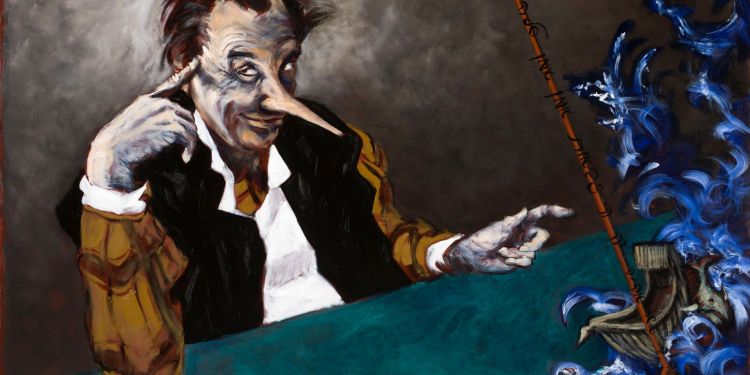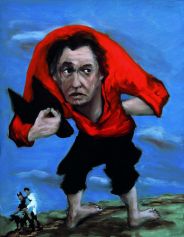News
>>>
18.07.2022
THE CENTRE POMPIDOU DEDICATES A MAJOR RETROSPECTIVE TO Gérard Garouste FROM 07.09.22 TO 02.01.23

The Centre Pompidou is dedicating a large-scale retrospective to Gérard Garouste, one of the most important contemporary French painters and an advocate of uncompromising figuration. Alongside 120 major paintings, often of very large format, the exhibition provides space for the artist's installations, sculptures and graphical works. This retrospective enables us to grasp the full richness of the unclassifiable career of Gérard Garouste, l'intranquille [the restless], whose life and enigmatic body of work, governed by study but also by madness, sustain each other in a gripping dialogue.
Born in 1946, Gérard Garouste presented his first solo exhibition in a gallery in 1969. From his studies at the Paris School of Fine Arts, he retained a questioning attitude towards the future of painting, notably when he discovered the radicality of iconoclastic figures like Marcel Duchamp. Ten years later, after several incursions into theatre as a decorator and director, he confirmed his choice to be a full-time painter in the most classic sense of the term, attached to the ancestral techniques which he has constantly sought to perfect. This position gave him the freedom to devote himself fully to the subjects of his pictures, inspired by mythology, literature, Biblical narrative and Talmudic studies. However, for Gérard Garouste, the subject is only a pretext to stimulate vision and reflection. Although he provides some keys to approach his paintings, he invites us rather to reflect, to have a personal understanding of his body of work.
From his first period, at the beginning of the 1980s, the artist stages two opposite and complementary figures, the "Classic" and the "Indian" - the Apollonian and the Dionysian - at work, according to him, in each individual. He revisits the history of art in a masterly way through Greek mythology and the genres of painting. The figure, the portrait, the still life are explored in turn in immense paintings whose narrative thread refers to mythical episodes and whose manner recalls the great painters that Garouste studied assiduously: Tintoretto, El Greco... However, these works resist any classification: elusive in their purpose, they are impressive pieces of figurative painting.
In his first period, in the early 1980s, the artist presented two opposing and complementary figures, the Classique and the Indien [the “Classicist” and the “Apache”] – the Apollonian and the Dionysian – which he believes are at work in each individual. He revisits the history of art in a masterful way through Greek mythology and the genres of painting. Figures, portraits and still lifes were each explored in immense paintings whose narrative thread refers to mythical episodes and whose manner is reminiscent of the great painters that Garouste studied assiduously: Tintoretto, El Greco... These works nevertheless resist all classification: elusive in their finality, they are impressive pieces of figurative painting.
Following on from his discovery of a great poetic narrative, Dante's Divine Comedy, the mid-1980s led to a new corpus with crumbling motifs and pungent colours. The painter dedicated himself to a pictorial exploration in osmosis with the famous text describing the descent into Hell, to such a degree that the images are transformed into an original form of abstraction. The Indiennes series prolonged this singular research on monumental free-standing canvas supports.
For Garouste, Dante's work was also an introduction to different levels of Biblical interpretation. This initiation culminated in studies of the Talmud and the Midrash, to which the artist devoted himself and which began to underpin his artistic work in the mid-1990s, before openly sustaining all his painting from the 2000s. Figures become letters, emerging from the ever-ambiguous narratives of the Jewish exegetical tradition in which the artist, fascinated by Hebrew, took an increasingly passionate interest, to the point of making it a constant in his work. The question of the interpretation of texts which, according to this tradition, provide a multiplicity of meanings, finds a direct echo in the painter's proposed subjects, borrowed from the Bible and the literary works of writers such as Cervantes and Kafka.
Inspired by this tradition, Gérard Garouste's painting is not meant to be attractive. It fears neither aberration nor deformation, mutilation or reconstruction of the figure. It is a painting that relentlessly questions and overturns certainties : a painting that disturbs, but in the manner of a game, whose rules have to be constantly reinvented.
SOUTENU PAR TEMPLON

